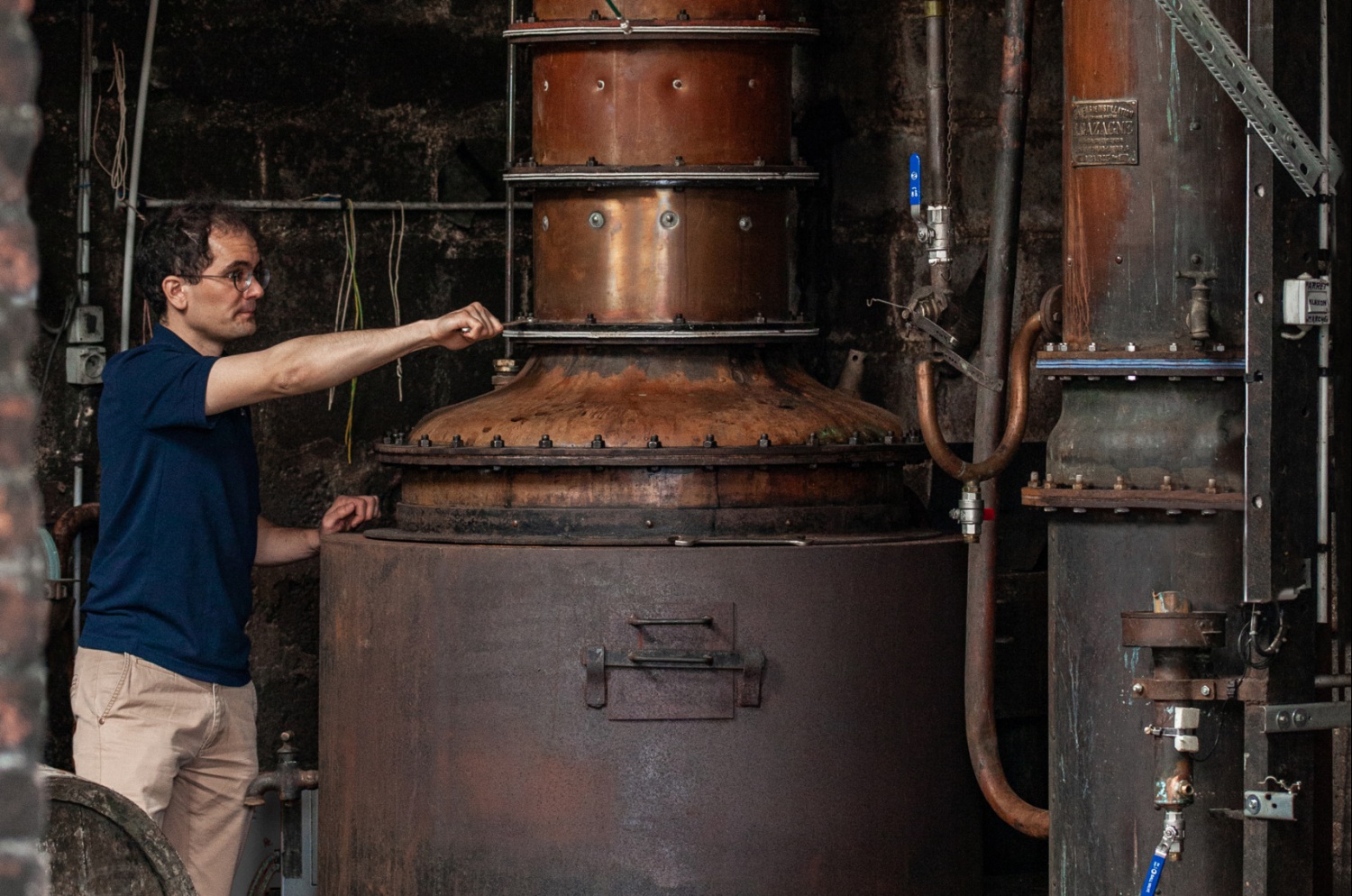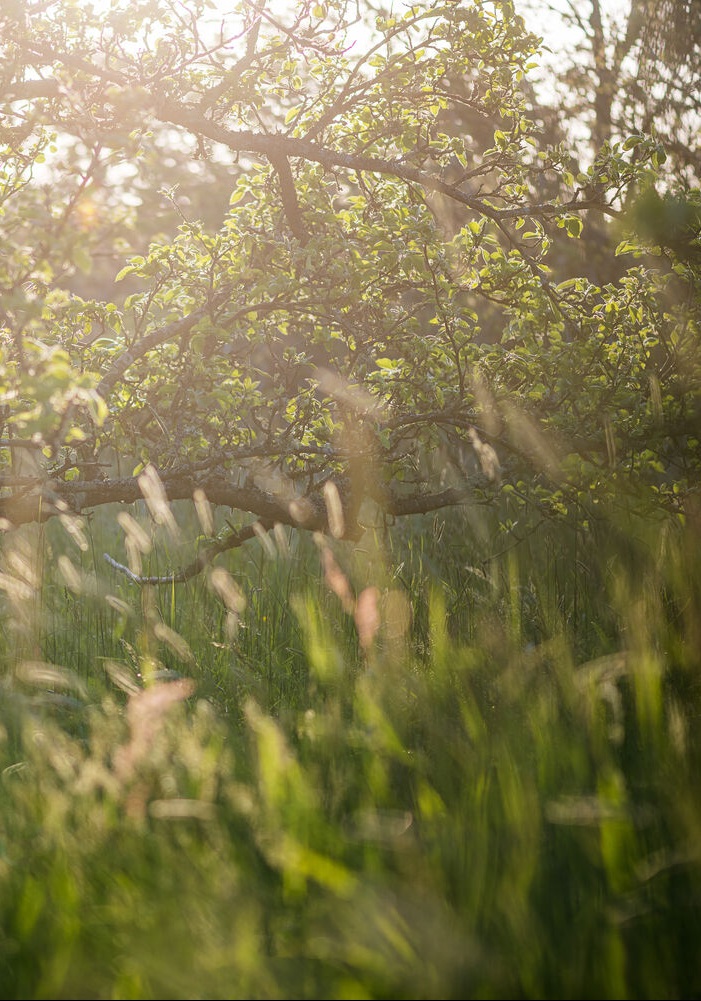
Fruit, wood, time
& creativity
Crafting a great spirit is painstaking work and requires a unique savoir-faire. 3 million trees and 300 producers perpetuate the age-old tradition of Calvados-making.
In the beginning, there was an apple (and maybe a pear or two)…

It all begins in the orchard. Although they require much work throughout the year, trees are pruned at the end of the winter, before the start of flowering and pollination in the spring. Bees and other pollinators play a vital important role in the development of the flowers, and therefore in the development of the fruit.
Similarly, grass between the rows is a fundamental part of the productive ecosystem: it preserves the richness of the soils and softens the fall of the ripened fruit.
But the most important period is that of the harvest, which usually starts in September and finishes in mid-December for the latest-ripening varieties.
Unlike eating apples or pears, cider fruits are small and are particularly rich in tannins.
Apples are classified into four families: sweet, sharp, bittersweet and bittersharp. It is the subtle blend of these different varieties which gives the cider that will be distilled its balance and character, which then come through in the Calvados.
Once harvested, the fruit is brought together, sorted and cleaned before being mashed. The pulp is then pressed to extract the juice, which is known as the “must”.
The must is naturally fermented in tank. The specifications do not authorise pasteurisation or the addition of gas, acid or sugar. The fermentation process transforms the sugars contained in the must into alcohol.
The ciders are ready to be distilled when the sugars have been completely consumed and the alcohol content is at least 4.5% abv at 20°.
There is a minimum of 21 days, in which time the fermentation takes place, between the juice extraction and the distillation for Calvados and Calvados Pays d’Auge. This minimum increases to 30 days for Calvados Domfrontais.
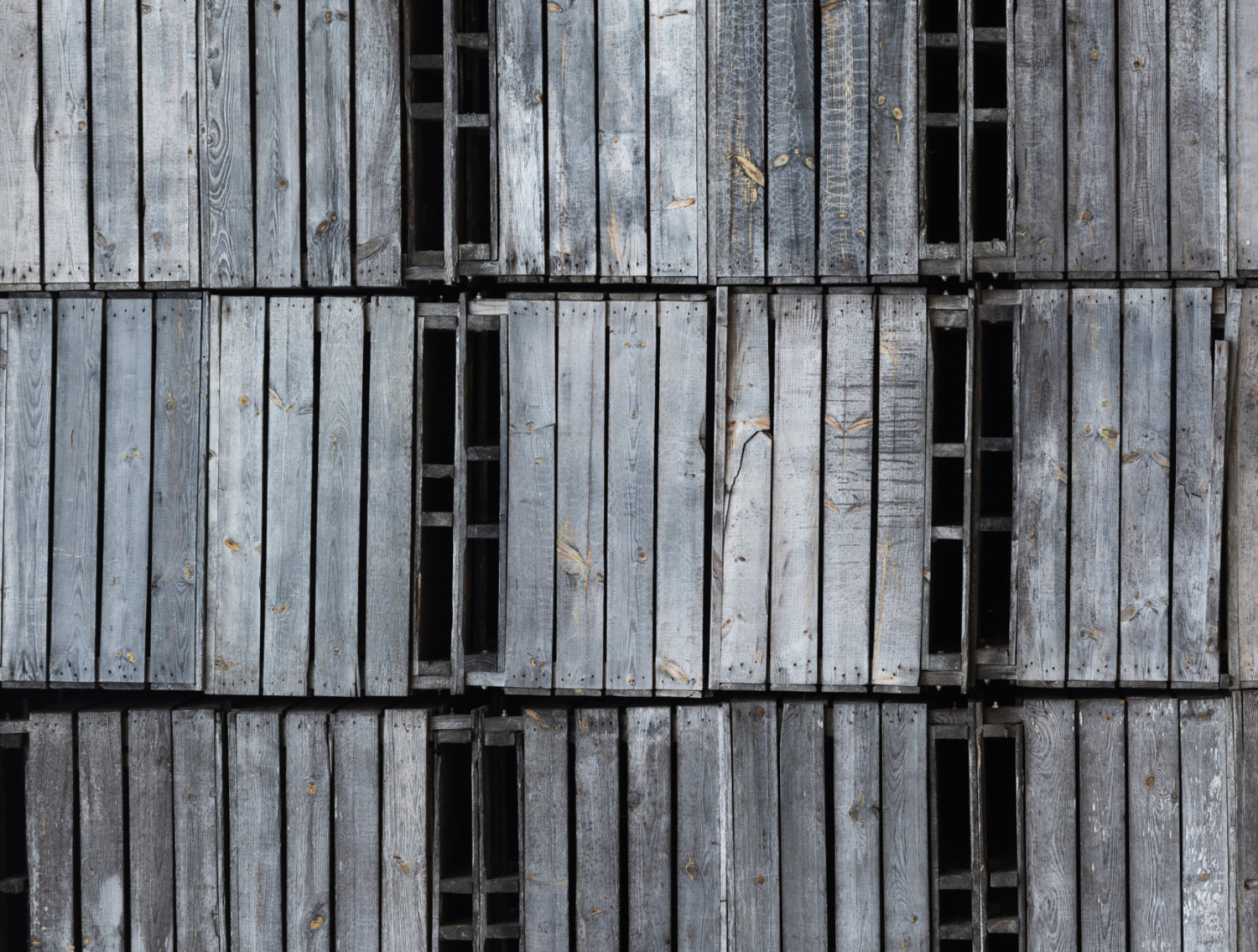
An important element
Cider or perry is transformed into Calvados through distillation, a process that separates alcohol from water. When the cider is heated, the alcohol it contains — due to its lower boiling point — evaporates before the water.
The still is the instrument which collects these alcohol vapours and condenses them to obtain an eau-de-vie in which the volatile substances that make up the bouquet are found.
The type of still used for this process is of great importance.
Two types of still coexist within Calvados’ three appellations: the pot still and the column still (fixed or mobile).
The Calvados appellation is the only appellation to allow the two methods of distillation.
For the Calvados Pays d’Auge, a double distillation is carried in a pot still, usually made of copper.
The cider is added to the boiler and heated. The alcohol vapours rise, are collected in the still head, enter the swan’s neck, then move through the cooling coil which is surrounded by cold water.
In contact with the coolant, they condense to liquid form. The “heads” and the “tails”, the vapours from the beginning and the end of the distillation which are rich in higher alcohols and will be redistilled with the next batch of cider, are extracted to obtain the “brouillis” or “petite eau” (with 28–30% abv.).
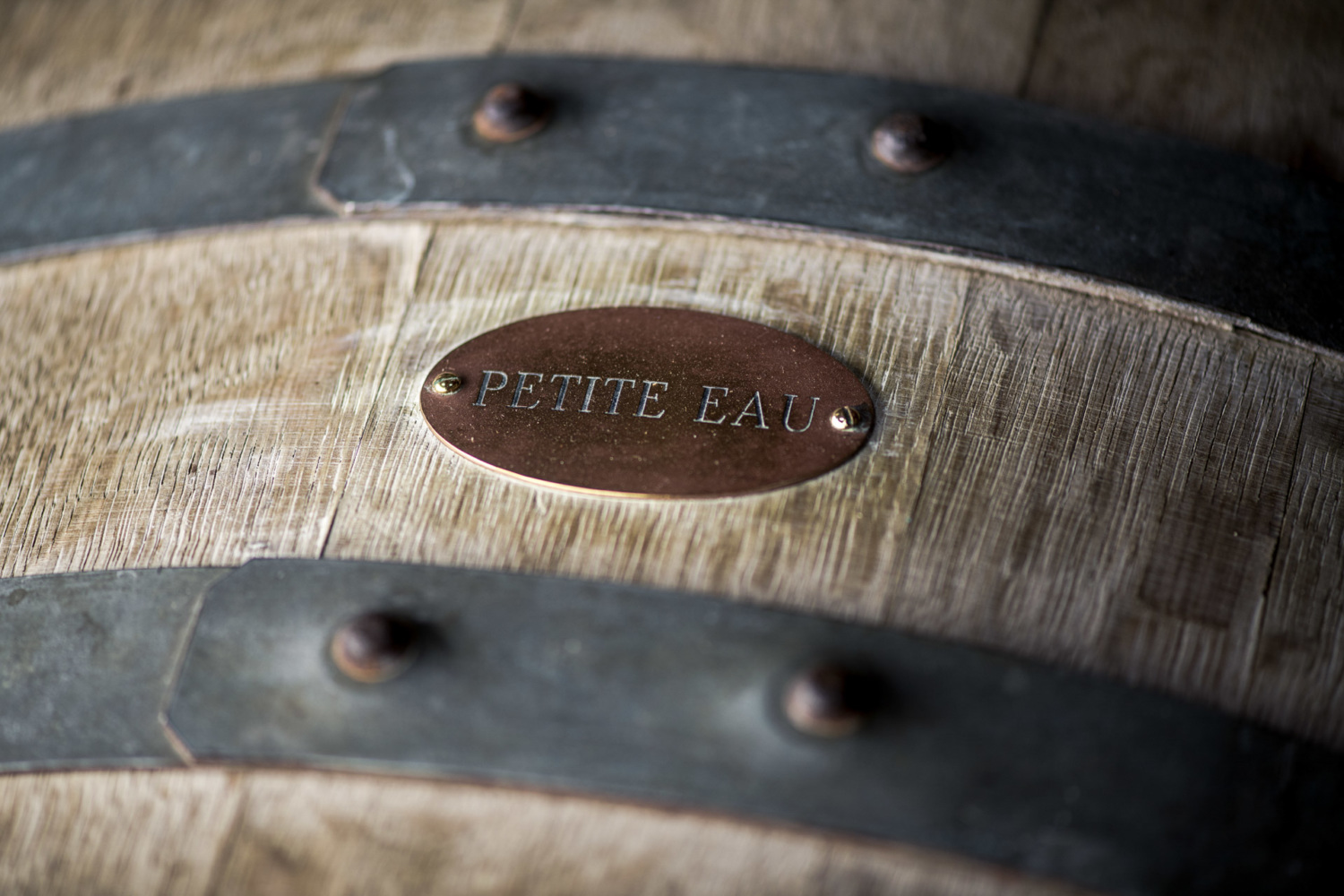
Five or six first distillations are required to obtain enough brouillis at 30% to be added back to the boiler for the second distillation.
As before, the “heads” and the “tails” of the distillation are separated. What remains is the heart of the distillation, the “bonne chauffe”, which must not have an alcohol strength of more than 72% coming off the still.
To save energy, the cider destined for the next round of distillation is added to the cider heater. This helps to cool down the alcohol vapour which passes through it, and heats the cider to 65ºC before it is sent into the boiler.
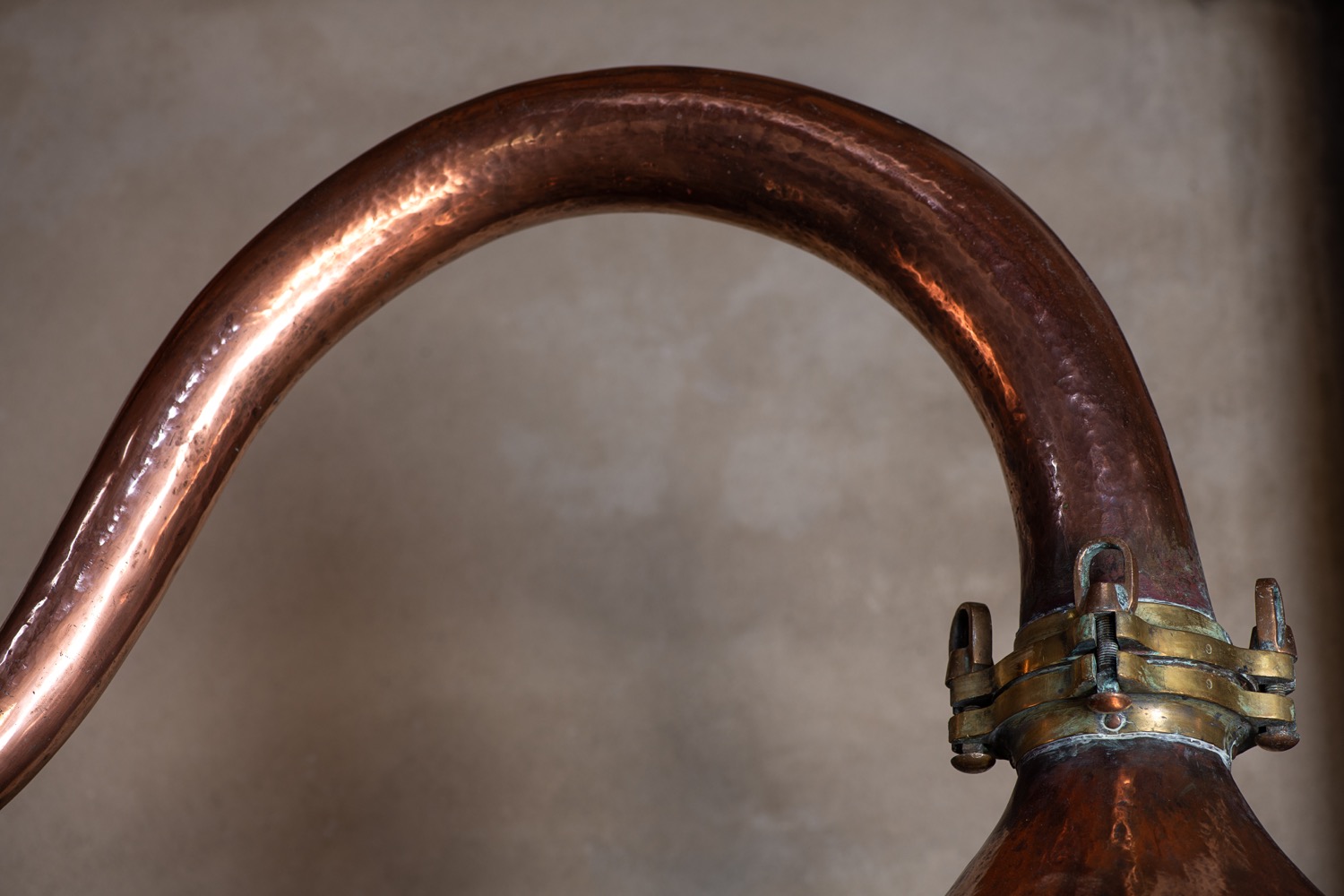

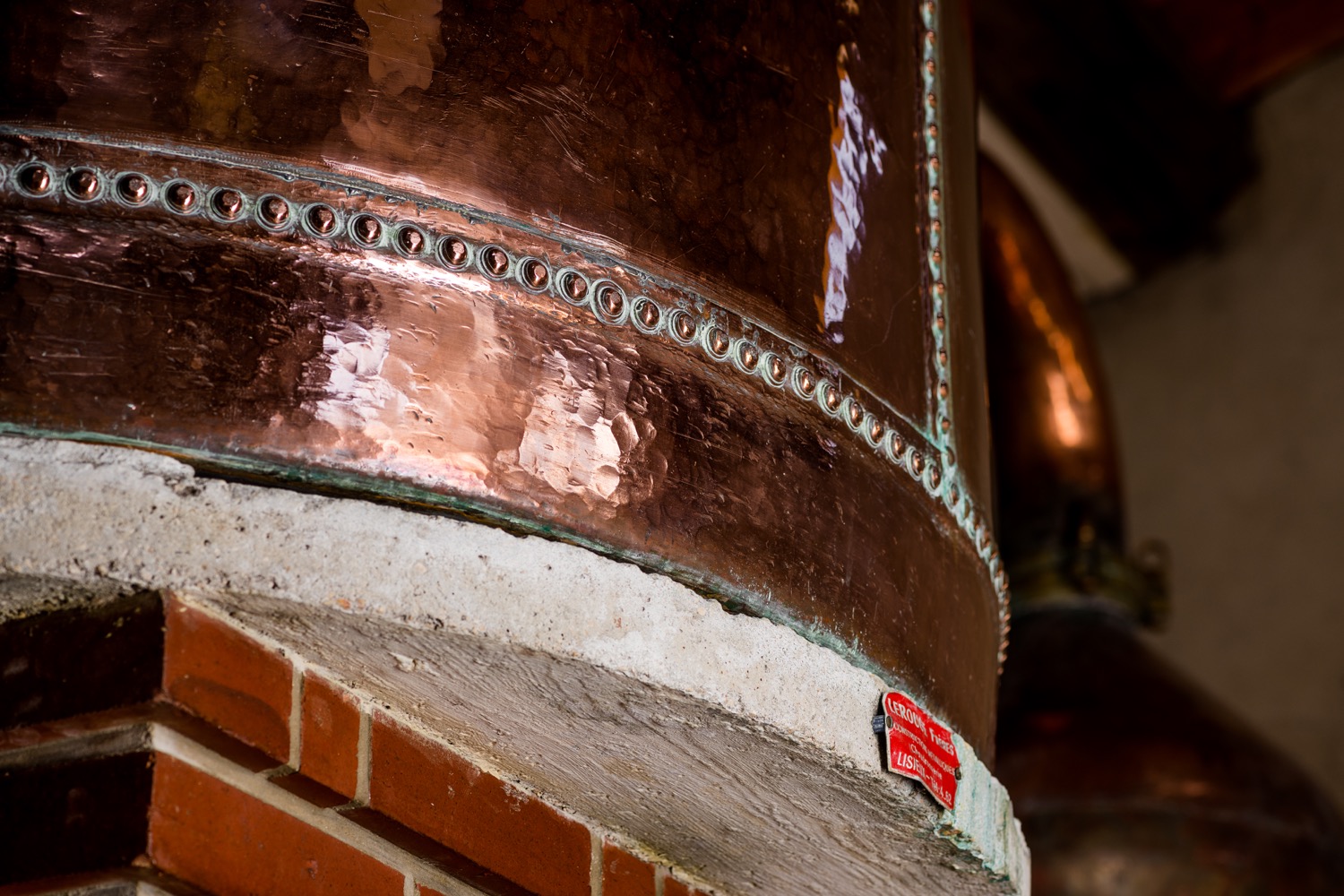
The column still is mandatory for the distillation of Calvados Domfrontais and is widely used for Calvados.
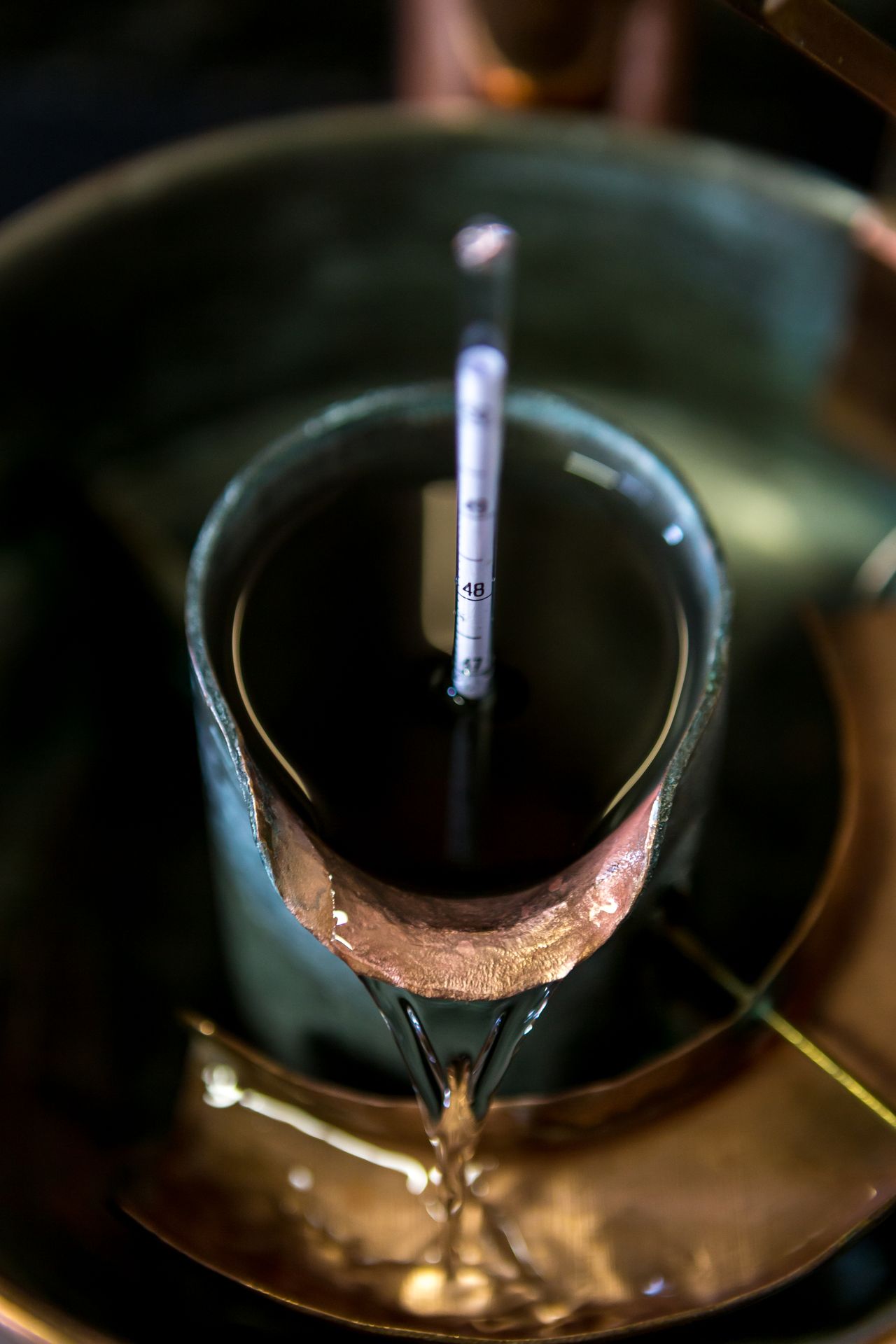
It is composed of three elements: the boiler, the distillation column (separated into three cylindrical sections named the stripping column and the concentrating column, each made up of two plates with bubbling elements) and a cider heater.
The cider rises by gravity through the cider heater and eventually reaches the top of the stripping column. It descends towards the boiler from plate to plate via overflow outlets.
Throughout its journey, alcohol is removed under the effect of the heat. The vapours produced from the stripped cider rise and, coming into contact again with the cider, are enriched with volatile elements: alcohol, esters and aromas. These vapours also cross the plates of the smallest column (the “concentrating” column) and are condensed in the cider heater thanks to the cold cider. This results in a distillate with less than 72% after the heads and the tails are removed.
The magic of wood and time
Depending on the appellation, Calvados can only be sold after a minimum ageing of two or three years. It is aged only in oak barrels, from sessile or pedunculate oak.
In contact with the air through the wood, the alcohol content and volume slowly decrease through the process of natural evaporation. This is what is commonly known as “the angels’ share”.
Calvados is aged in very dry oak barrels and the contact with the wood gives it the elements it needs to develop over time.
The tannins in the wood give it a specific hue, and the continuous exchanges between the young eau-de-vie, the wood and the ambient air allow it to develop its finesse and fullness.
In certain distilleries, the young Calvados is first aged in 250 to 600-litre new oak barrels, which contain a lot of tannins, to give it colour and character before transferring it to older barrels, some of which can be a 100 years old.

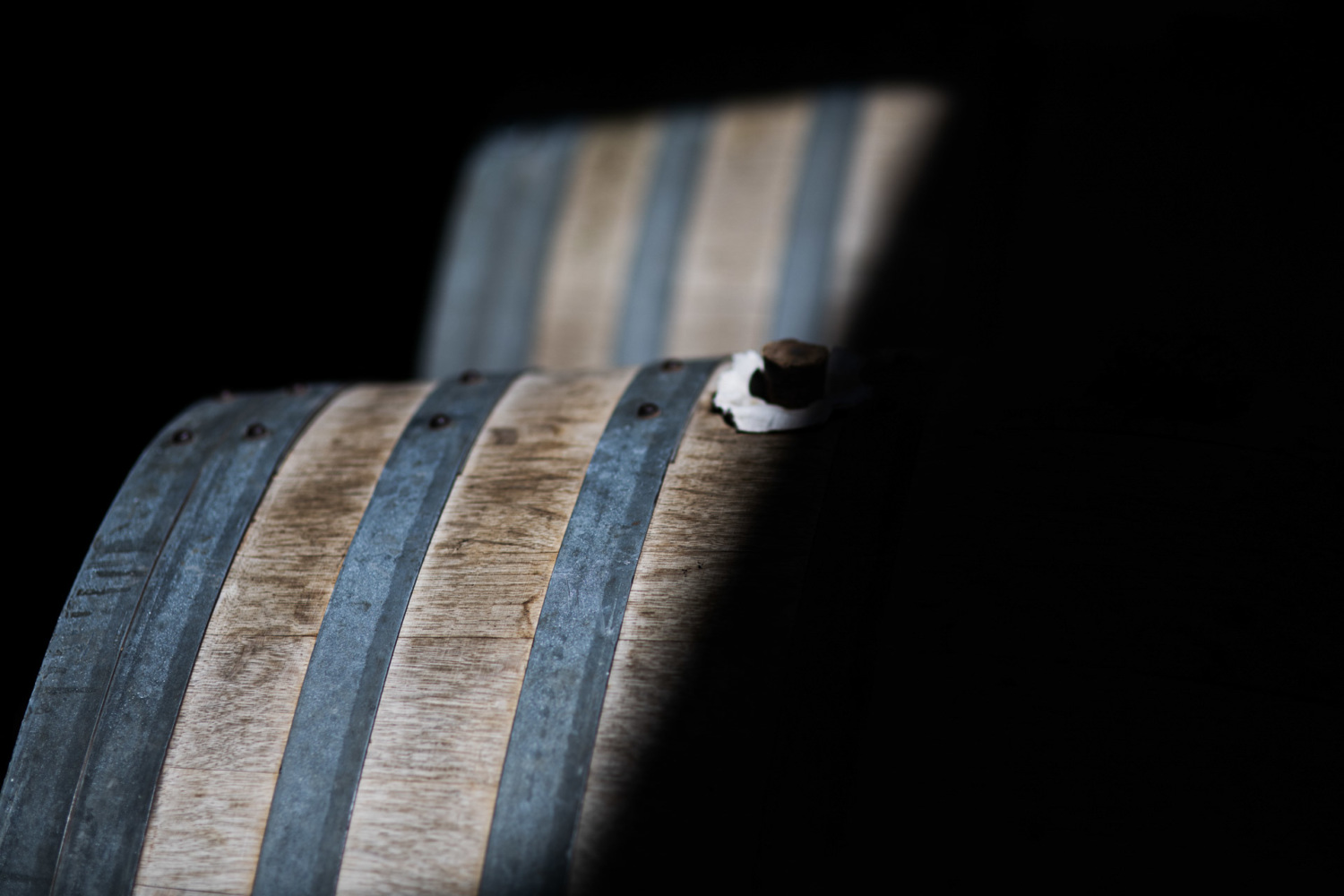
Other producers prefer to transfer the Calvados directly into 1,000 to 10,000-litre used vats, which are used both for ageing and storage.
Gradually, the Calvados’ aromas will become finer and its colour deeper, going from golden to a deeper amber hue. The aromas of fresh apple, very pronounced in a young Calvados, will evolve towards more complex aromas of cooked apples and oak and develop notes of vanilla, honey, spices or walnuts, signs of a fine maturation.
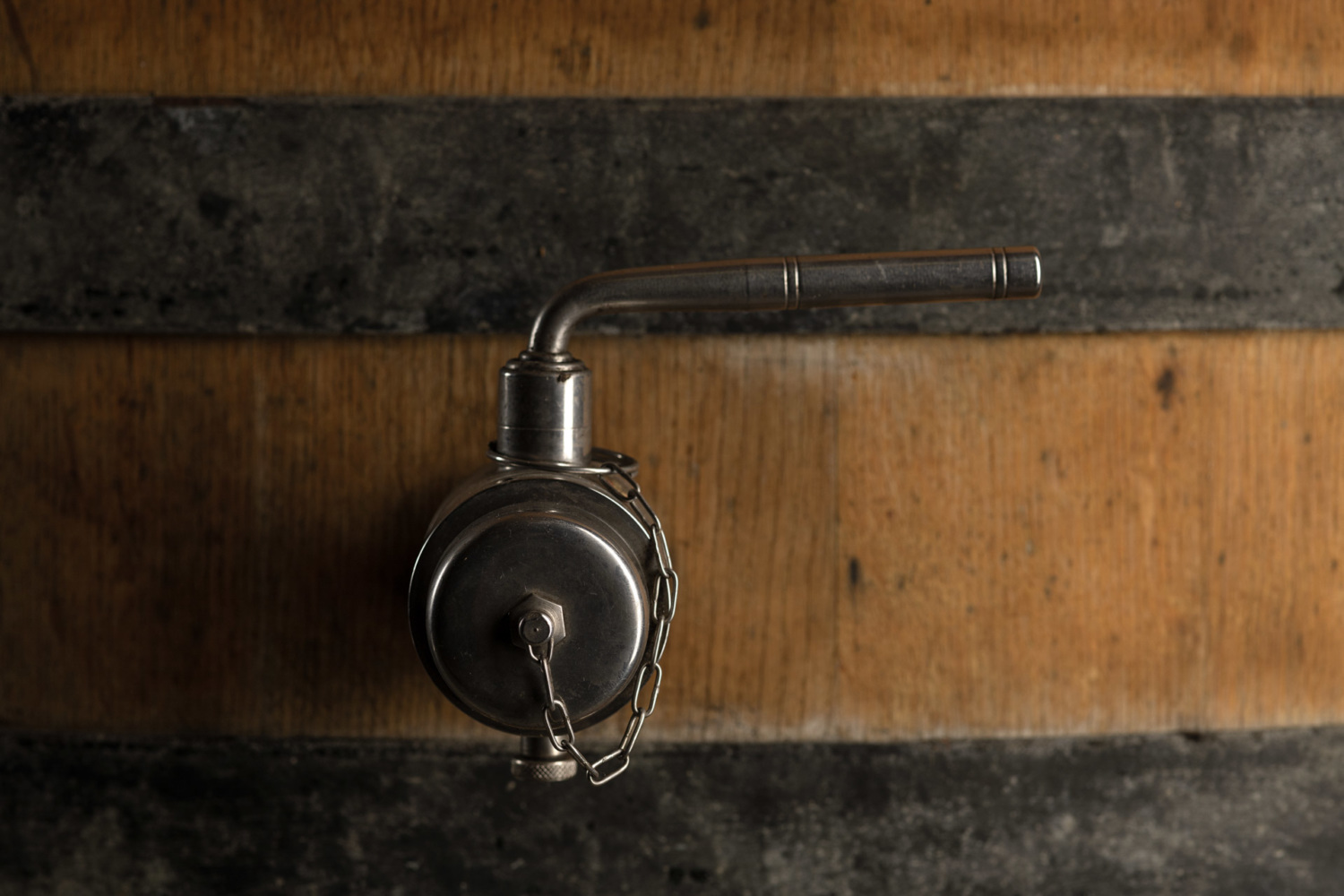
Vintages or blends
To be legally released for sale, Calvados must be at least 40% abv
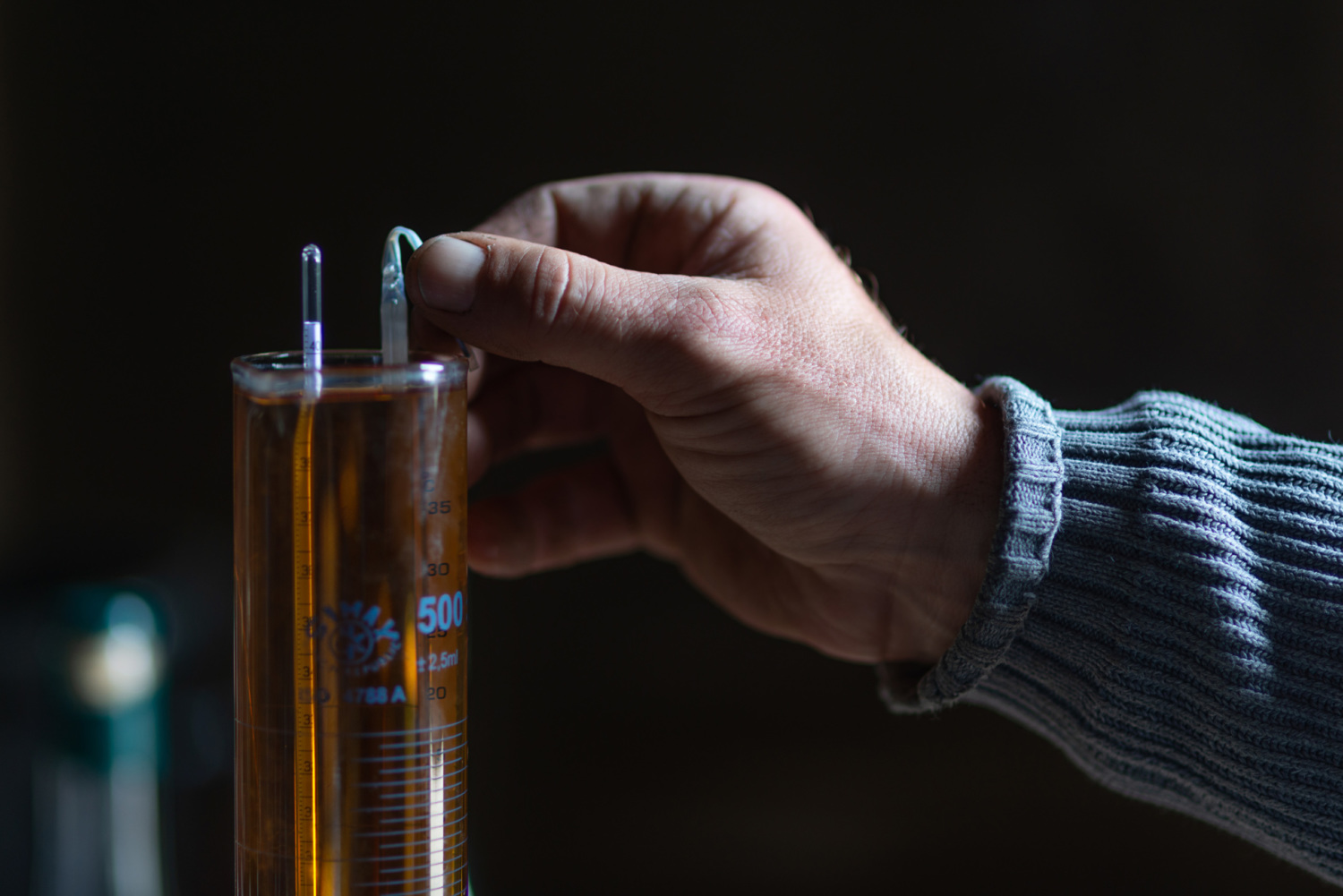
This alcohol content is obtained by the cellar master gradually adding purified water to the eau-de-vie.
This delicate operation is referred to as reduction.
Throughout the ageing process, Calvados is aerated and transferred to other barrels to make it softer and to impart certain desirable characteristics.
The cellar master’s training and experience, gained through years of tasting, are what enables the creation of Calvados with the unique fingerprint of the producer.
In a kind of alchemy, the blend is skillfully crafted by combining eau-de-vies of different ages, from various harvests or terroirs, bringing together the complementary characters of each.
Before bottling, these blends must be rounded off for several months during which time the different bouquets will combine and grow richer.
Some “cask strength” versions of Calvados are unreduced.
They have a natural alcohol content created by the evaporation of the eau-de-vie over time. Directly taken from the top of the barrel, they are usually bottled on demand and have a wonderful concentration of aromas.
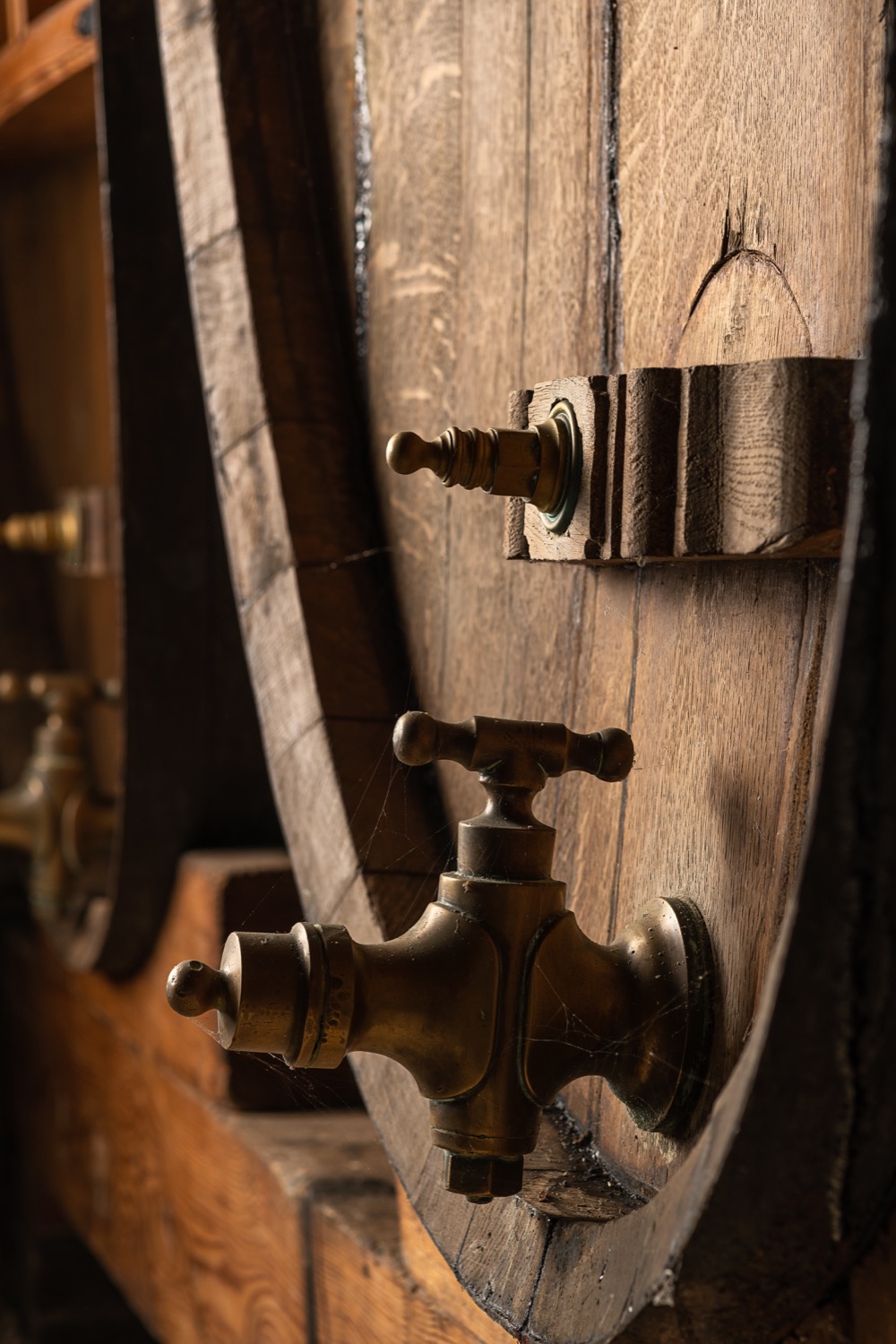
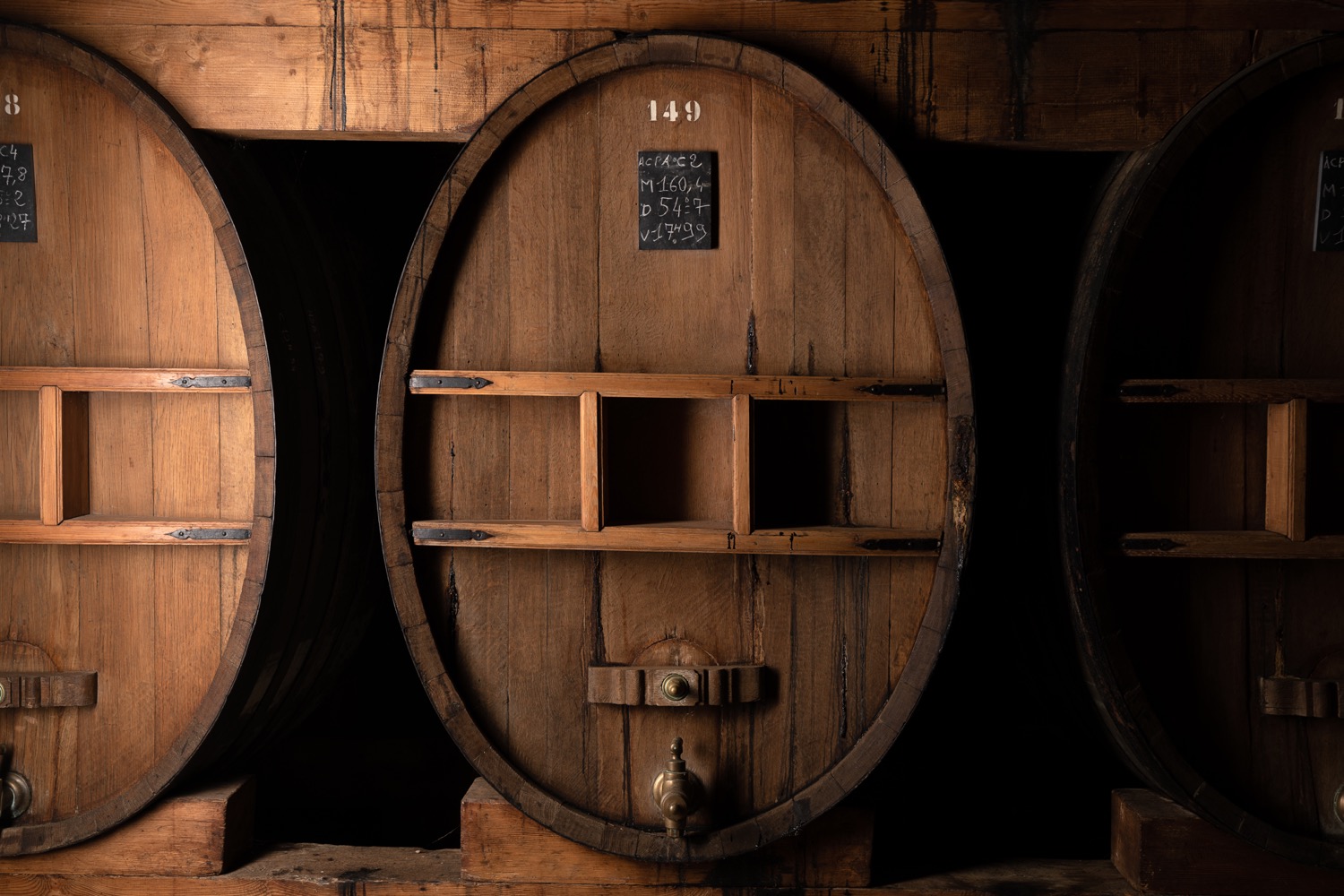
New trends
The classically aged or vintage Calvados remain the vast majority of the production in Normandy. However, Calvados is also part of a growing trend that we are seeing across the broader spirits market.
The last few years have seen the emergence of Calvados that are “single cask” (from one single barrel) or “cask strength” (straight from the barrel at its natural strength without water added), as well as Calvados with various “finishes” (maturation, after a first ageing, in barrels that have contained another spirit or wine, such as Bourbon, Whisky, Sherry, Sauternes, etc.).
These new generation Calvados have given this age-old eau-de-vie a new lease of life and ensure that it is firmly part of an exciting trend within the spirits industry.
What is an AOC?
An Appellation d’Origine Contrôlée (AOC) is a French label identifying a product whose various stages of manufacturing (production and processing) are carried out in the same geographical area and according to recognised know-how. The concept was born in 1905, but it was not until 1935 that a legislative decree created the Appellation d’Origine Contrôlée. The first AOC status was awarded on 15 May 1936. The Calvados Pays d’Auge became an AOC in 1942. Today there are 3 AOCs for Calvados: Calvados (1984), Calvados Pays d’Auge and Calvados Domfrontais (1997).

